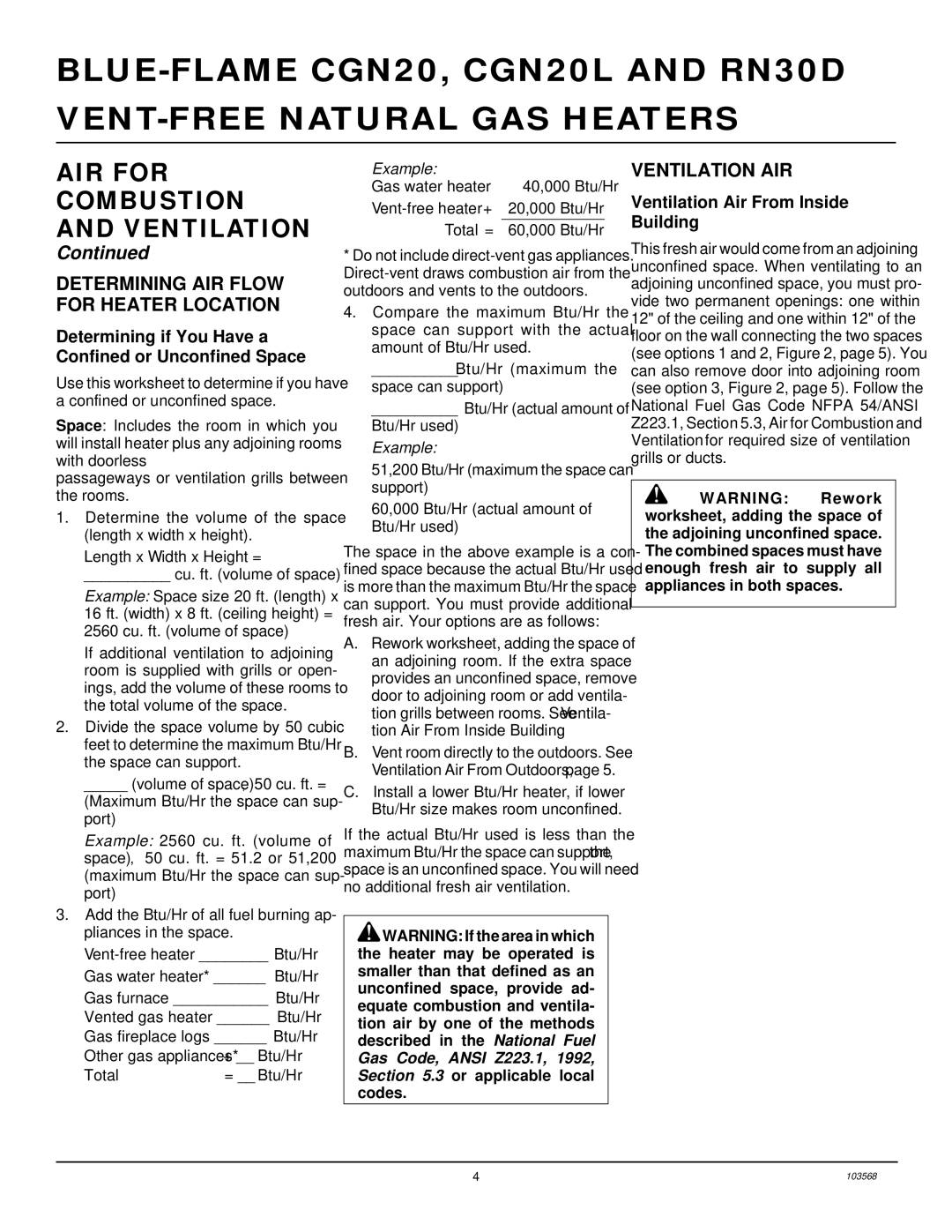CGN20L, CGN20, RN30D specifications
Desa RN30D, CGN20, and CGN20L are innovative models designed to meet the diverse needs of users looking for reliable and efficient solutions in various applications. These models are renowned for their advanced technologies and impressive features that set them apart in the market.The Desa RN30D is a robust unit primarily known for its high efficiency and durable construction. It operates with a powerful engine that utilizes advanced fuel technology, making it not only environmentally friendly but also cost-effective. This model comes equipped with a state-of-the-art control system that ensures optimal performance and user-friendly operation. The RN30D is ideal for both commercial and residential uses, providing a versatile option for users needing dependable energy solutions.
On the other hand, the CGN20 and CGN20L models focus on providing energy in compact forms. These models feature a lightweight design, which enhances portability without compromising on performance. The CGN20 is tailored for medium-scale applications, while the CGN20L offers additional capacity and features for larger needs. Both models benefit from cutting-edge inverter technology that allows for stable and consistent output, essential for sensitive electronics.
A standout characteristic of the CGN20 and CGN20L is their quiet operation. Noise reduction technologies have been integrated, making them perfect for use in residential areas or noise-sensitive environments. Furthermore, they are designed with enhanced cooling systems, ensuring reliability even during extended usage.
Each of these models includes safety features such as overload protection and low oil shutdown, providing peace of mind to operators. They are also equipped with multiple outlets, allowing users to connect various devices simultaneously.
In summary, the Desa RN30D, CGN20, and CGN20L cater to a broad spectrum of users, from homeowners to businesses. Their combination of durability, efficiency, advanced technology, and safety features makes them an excellent investment for energy solutions. Whether you require substantial power or a compact, portable option, these models deliver unmatched performance tailored to meet your specific energy needs.

